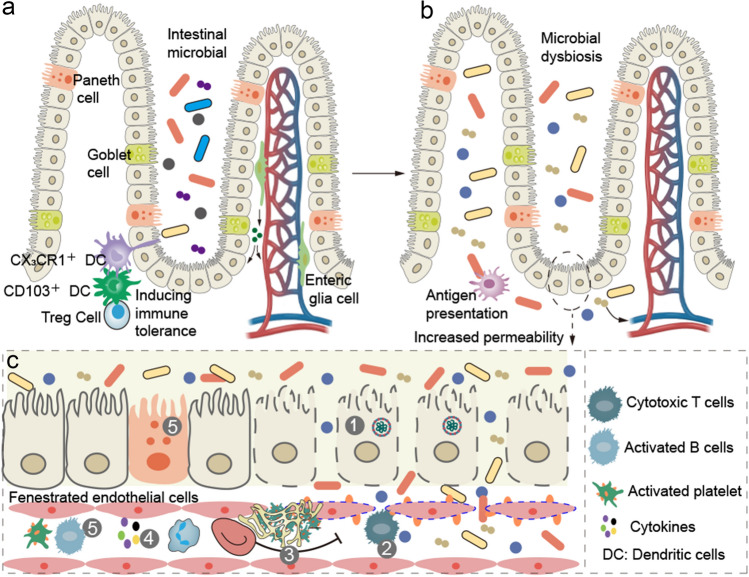Fig. 5.
Intestinal–blood barrier and gastrointestinal sequelae. a Intestinal–blood barrier consists of intestinal microbiota, epithelial barrier, immune system in the lamina propria and capillary endothelial barrier. Epithelial barrier protects the host from the microbial infection and, at the same time, allow the host to tolerate the microbiota. Goblet and Paneth cells respectively produce mucus and secrete antimicrobial peptides, protecting the intestinal barrier. Dendritic cells in the lamina propria senses the intestinal microbiota or their metabolic products and to induce immune tolerance. Pericytes and enteric glial cells, closely associated with fenestrated endothelial cells, contribute to preserve intestinal epithelial and endothelial barrier integrity. b SARS-CoV-2 infection increases the intestinal permeability and alters intestinal microbiota. Dendritic cells sense these microbiota and present antigens. c Accumulation of B and Paneth cells suppresses intestinal inflammation and promotes epithelial barrier repair in COVID-19. Persistent viral presence, inflammation and immune dysregulation (cytotoxic T cells) in convalescent patients maintain intestinal endothelial injury and microthrombi, which not only delay accumulation of B and Paneth cells, but also impede epithelial and endothelial repairs

